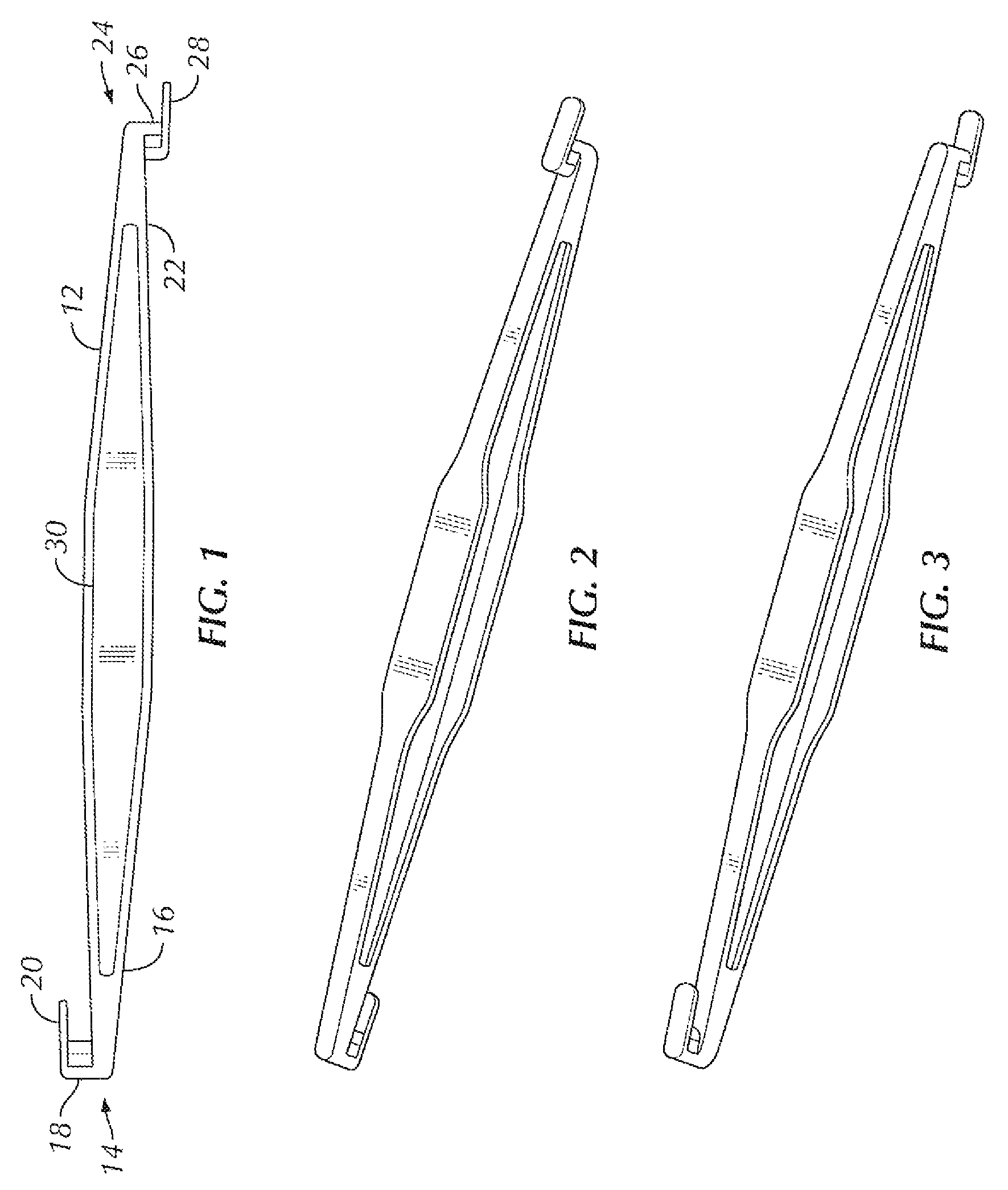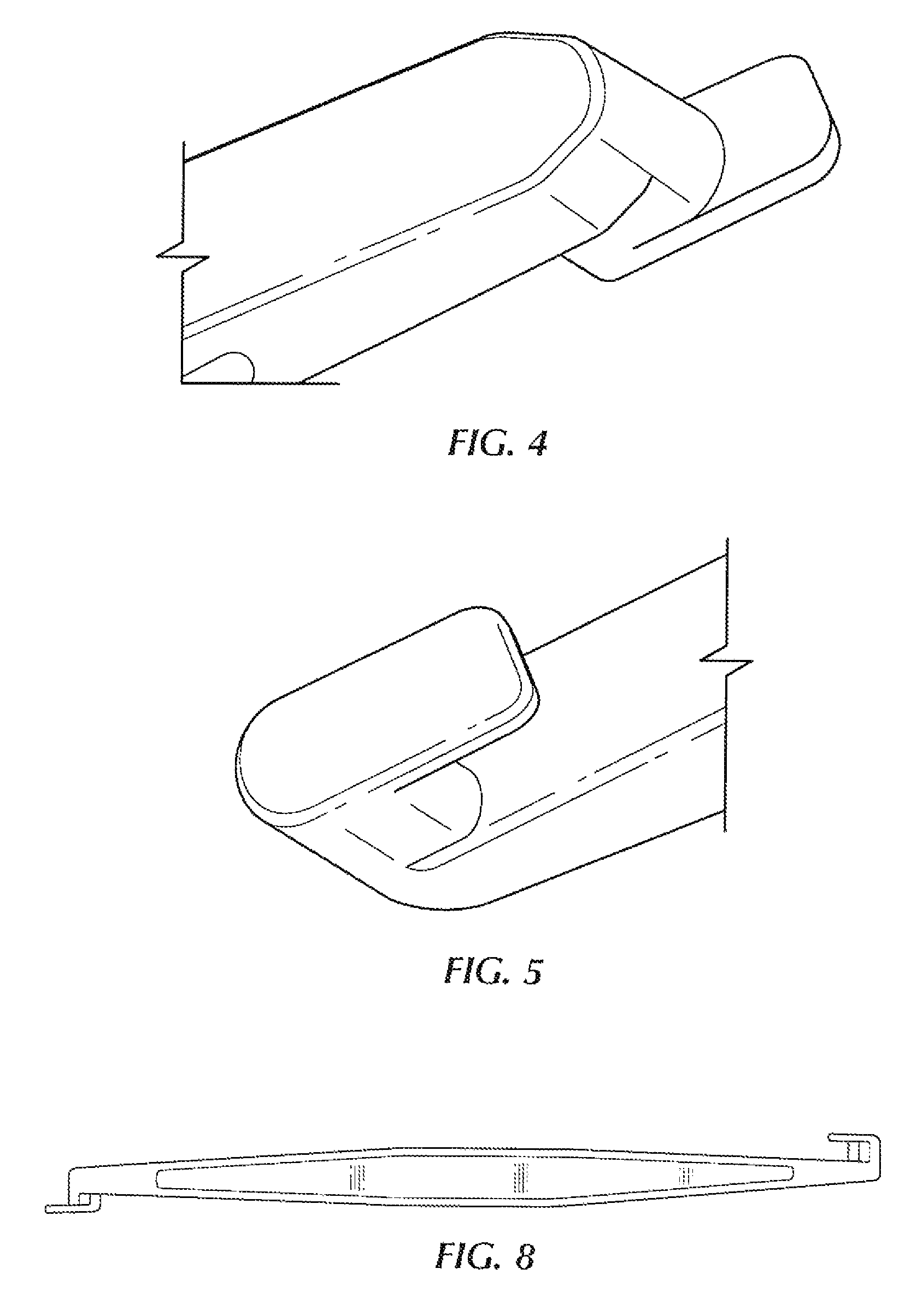Outie tool for removal of a plastic tooth positioning appliance or aligner (invisible braces) from teeth of a patient
a technology for teeth and aligners, which is applied in dental tools, dental surgery, medical science, etc., can solve the problems of patients constantly putting their hands in their mouths, difficult to remove these appliances, and unsanitary, and achieves convenient and safe use, convenient carrying in pocket or purse, and easy to fit under the appliance
- Summary
- Abstract
- Description
- Claims
- Application Information
AI Technical Summary
Benefits of technology
Problems solved by technology
Method used
Image
Examples
Embodiment Construction
[0023]The invention is called the OUTIE TOOL. The Outie Tool is manufactured by injection molding. A mold is created from the 3D design and precision-machined to form the features of the design illustrated, the barrel, hook appendage, and lever appendages. The molds are made from metal, usually either steel or aluminum. The material used is polypropylene food grade (PP) which is completely safe for food and medical usage; it is sufficiently hard and strong enough to withstand normal use without breaking or cracking. The material is fed into a heated barrel, mixed, and forced into a mold cavity where it cools and hardens to the configuration of the mold cavity.
[0024]The Outie Tool solves all of the above problems as described below:
[0025]Referring now to FIG. 1 Side View of OUTIE TOOL is illustrative of the compact and lightweight design, easy and convenient for persons to carry them in purse or pocket during daily life. The straight, rigid design of the barrel is necessary to suffic...
PUM
 Login to View More
Login to View More Abstract
Description
Claims
Application Information
 Login to View More
Login to View More - R&D
- Intellectual Property
- Life Sciences
- Materials
- Tech Scout
- Unparalleled Data Quality
- Higher Quality Content
- 60% Fewer Hallucinations
Browse by: Latest US Patents, China's latest patents, Technical Efficacy Thesaurus, Application Domain, Technology Topic, Popular Technical Reports.
© 2025 PatSnap. All rights reserved.Legal|Privacy policy|Modern Slavery Act Transparency Statement|Sitemap|About US| Contact US: help@patsnap.com



